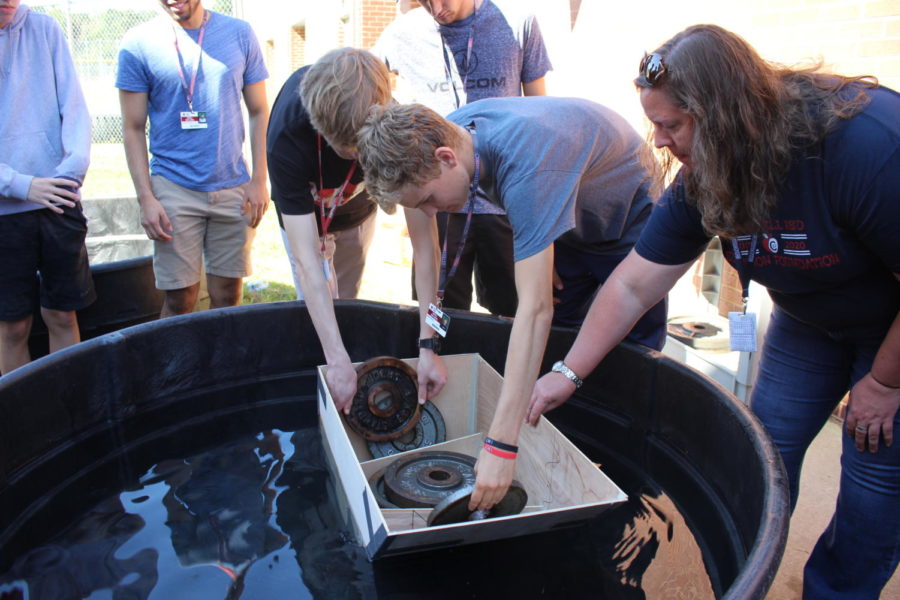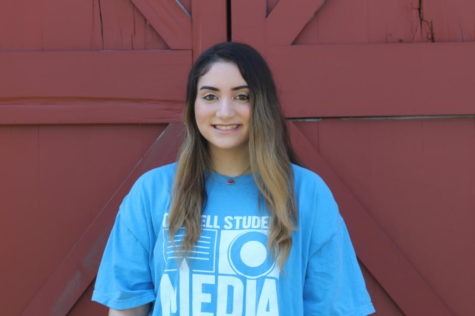On the Spot: Physics students test floating ability of boats, calculations (with video)
Coppell High School seniors Riley Warner and Josh Zawislak and CHS physics teacher Stephanie Sloane place weights into the students’ boat, named The Acorn, at the back of the fieldhouse during sixth period. CHS AP Physics II classes created their own boats, which must hold a minimum of 10 pounds.
September 17, 2019
This Monday and Tuesday, Coppell High School AP Physics II classes are testing out student-constructed boats. During each class period, students take their boats to the back of the fieldhouse to test how much weight each boat can hold.
The lab’s purpose is to understand the process of flotation and buoyancy and to design a boat that can float and withstand at least 10 pounds. Floating abilities of the boats is tested in a large tub of water, resembling a kiddie pool.
Creating the boat takes patience, hours of work and a creative mindset.
“I really enjoyed our boat lab even though it was really stressful at times,” CHS senior Sanskar Shrestha said. “It allowed us to be creative and add our own touch with the end goal of creating a boat that could hold enough weight.”
Weights are placed into the boat in small increments depending on each group’s calculations.
“For this project you have to fully understand how buoyancy works, how to set up a free body diagram and [how to perform] volume calculations,” CHS senior Vedin Barve said.
Students were given the freedom to build the boat with any material, but there were requirements to be aware of before it was created.
“They had to create a boat with some specific criteria,” CHS physics teacher Stephanie Sloane said. “The boat had be boat shaped and not raft shaped, had to hold a minimum of 10 pounds and was required to float five centimeters above the water at all times.”
The students learned how weight is measured using buoyancy and how the design of the boat was affected by the design of the boats.
“This project emphasized that there are practical applications to physics concepts through hands-on activities and experiences,” Barve said.
Students worked in small groups, allowing them to divide the time and effort needed to make a successful boat.
Follow Christie (@christie2344) on Twitter.











